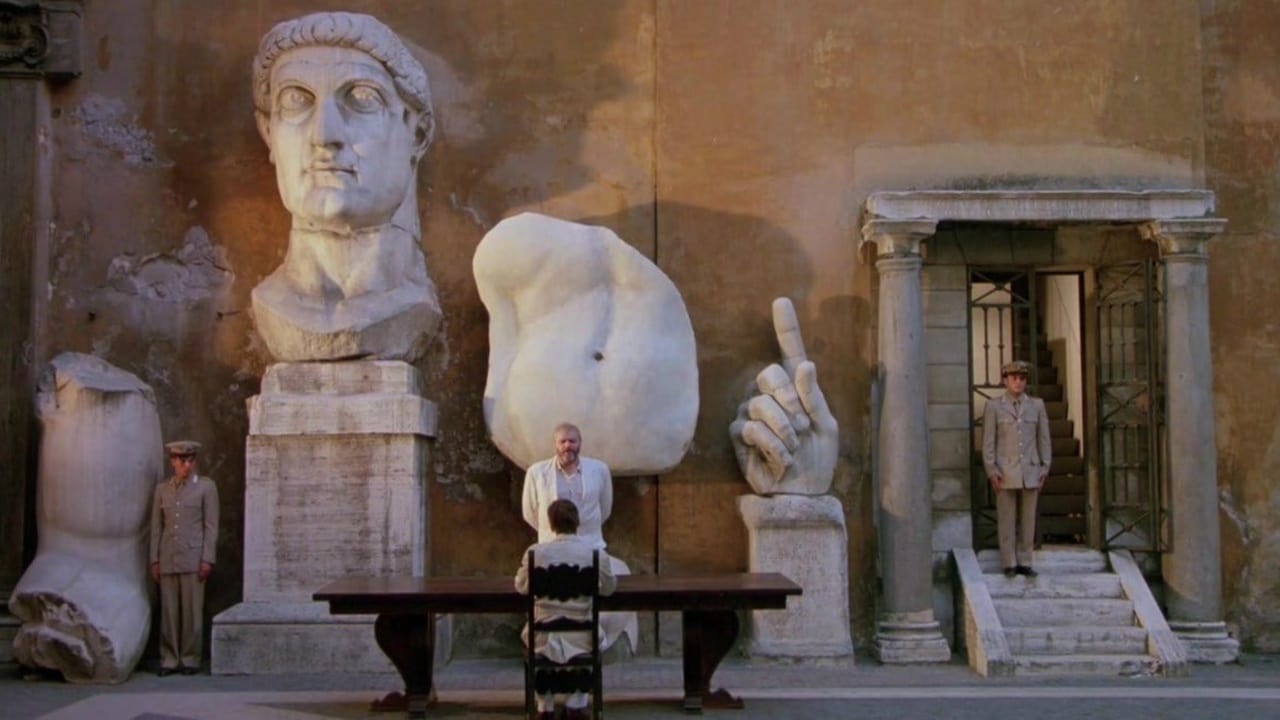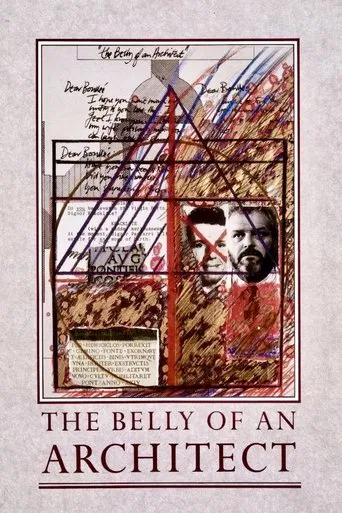

Best movie of this year hands down!
... View MoreWho payed the critics
... View Morei know i wasted 90 mins of my life.
... View MoreHighly Overrated But Still Good
... View MoreOne of my favorite Greenaway films. Story, visuals, metaphor, acting, music...it's got it all. The visuals of Rome are stunning. Wim Mertens' musical accompaniment is brilliant and on par with any modern minimalist composition. After years of seeing his TV roles, I was completely floored by the depth and authenticity Brian Dennehey brought to the main character. I've watched this film at least a dozen times over the years and enjoy it thoroughly each time. Unlike a previous reviewer, I don't see the need to judge this film based on how much it resembles previous or subsequent Greenaway films. "Belly of An Architect" is not as abstract as some of the other Greenaway films, but that shouldn't be viewed as a negative. The film is great and rich in its own right. I highly recommend it.
... View MoreDid Mr. Greenaway's symmetrical script undergo modification during pre-production? Is this the story of an Anglo-Saxon man in a mid-life crisis entrapped in a delirious paranoid nightmare in the heart of 'latin' sexuality? The young Italian architect (Caspasian) is played by a French actor who has, it is true, a Roman nose. It embarrasses to see Mr. Greenaway's very British prep. school preoccupations with 'foreigners' surface in such a supposedly intellectual exercise as this. At least 'A zed and Two Naughts' was 'camp' and somewhat funny. Mr. Greenaway remains an eager film student trying to provoke mediocre coffee-table critics into a superficial cock-fight. Resnais is a cut above all this. All respect to Brian Dennehy. The Scene with the young doctor was nicely handled.
... View MoreStarring Brian Dennehy, an unusual actor for a Peter Greenaway film, as Kracklite, an architect, a career we don't often see explored in cinema, Greenaway's 'Belly of an Architect' is somehow bigger and more emotionally ambitious than most of his other works, which lack human resonance. In his other films, the characters are uniformly British and so Greenaway's coldness and archness toward them is indicative of a general misanthropy. Here, it's aimed squarely at Romans, whose loose morals and carnivorous practices contrast with the enormity of Kracklite's ego and generosity of spirit. His stomach is being eaten away by some unknown illness or cancer, and this serves as a metaphor for his ego being eaten away by the carnivorousness of Roman culture. His wife, his identity (which is a vicarious one, given his devotion/debt to his idol, Bouleé) and his work are being repossessed by the conquestful Roman carnivores who aim to destroy him simply for the material gain of taking what is so ostentatiously his. But his devotion to Bouleé, his need to make Bouleé's work more widely known, is not a singular or altruistic act; the exhibition he is organizing will make Bouleé more commercial and accessible, but it will also be an addendum to his own career, a manifestation of his ego. His diary is written in the form of letters to Bouleé, to whom he is almost praying as his own personal God. And his devotion to this God is not a selfless one, since Bouleé is so inexorably an element of his own identity.Rome and its buildings are given a golden, postmodern glow, their clarity enhanced by Wim Mertens' musical score, which adds its own sunlight to the proceedings. But the sunlight that glows throughout Rome and permeates the aura of the film is an impersonal one, an indifferent one, as ancient as the ruins of Rome, which our Roman characters observe have been more useful and influential as ruins than they were prior. "They're better as ruines," a character observes. "Your imagination compensates for what you don't see, like a woman with clothes on." The Romans are depicted here as carnivores (and the word "carnivore" is used multiple times) who not only want to devour and repossess, but want to strip. Brian Dennehy's performance here is indeed stripped, larger than life, fiery. He explodes on screen, bringing the film into another realm, introducing emotional dimensions not often seen in the films of Greenaway; and in this, the film has a power that inhabits the movie's symmetrical form (mostly every shot is symmetrical), its architecture, and threatens to destroy it. The coldness that is typical of Greenaway, that architecturized godlessness, is at war with fiery human passion in all its flawed nakedness.Greenaway's movies, in their arctic wit and obsession with symmetry, are cinema as architecture more so than storytelling, so 'The Belly of an Architect,' contrary to the claim by many that it's his most mainstream and therefore weakest work, is perhaps his most appropriate film, and maybe his best
... View MoreAn Architect and his wife find themselves in Ancient Rome 1987! The Architect's life, (played brilliantly by Dennehy), falls apart by his obsession with a cancer stricken stomach. May sound like turgid stuff but Greenaway keeps it fascinating.
... View More